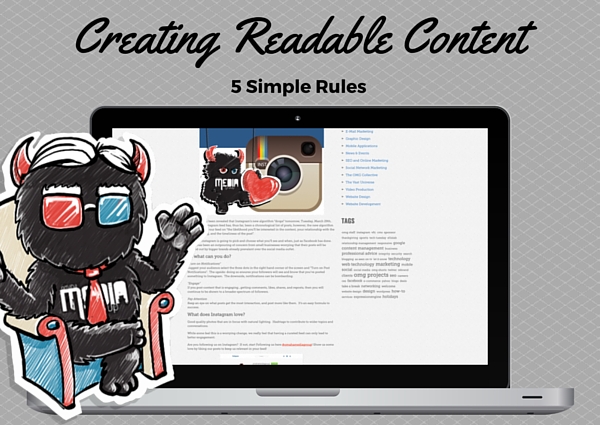 https://www.omahamediagroup.com/images/uploads/monster_gallery/Omaha-Media-Group-Black.jpg
admin
https://www.omahamediagroup.com/images/uploads/monster_gallery/Omaha-Media-Group-Black.jpg
admin
Major SEO Mistakes To Avoid During Your Website Redesign!

Redesigning your website is not just an exercise in esthetics. Sure, the visual elements of your website will likely get the most attention, but remember a great website design also requires you consider and improve what is under the hood.
A flashy exterior does not help much if the machine fails to function. If people cannot find your site and intuitively navigate through the pages it does not really matter how beautiful it looks. When it comes to website redesign, form and function need to be a package deal. Let’s discuss 10 SEO mistakes to avoid during your next website redesign.
Mistake #1: Not thinking of SEO right from the start
When contemplating a website redesign, it is easy to focus on the features appealing to the eyes. To ensure your new site will truly resonate with your target audience and save you from headache later, you need SEO to be incorporated into your strategy from the beginning. When planning out your redesign strategy, make sure to take discoverability and accessibility into account.
If you do not have SEO in mind from the initial strategy session you are going to lose what took you so much time and effort to build. Everything from the structure of the site to the meta description of your website pages is important and should be taken into consideration.
Mistake #2: Not doing an audit of your existing site
Before you bust out the wrecking ball to demo your soon to be forgotten site, take time to examine it and determine what works and what does not.
Here are some things to consider:
- Average monthly number of visits/visitors/unique visitors
- Top performing keywords in terms of rank, traffic and lead generation
- Number of inbound linking domains
- Total number of total pages indexed
- Total number of pages that receive traffic
Building out a navigation map that takes SEO into consideration will save you a lot of headache throughout your redesign project. Review which pages have incoming links, which have the best page-rank and what keywords drive traffic and conversion. Make sure these important pages are not removed or deleted in the new layout. This is a critical first step that should not be overlooked regardless of how quickly your redesign must be completed.
Mistake #3: Failing to identify and include commonly searched keywords
In the new era of SEO you can no longer keyword-stuff your way to search rank success. If Google finds out that you are blatantly overusing or hiding keywords on your site, your credibility and rankings could take a hit. If you are doing what Google wants you to do, keywords will work their way into your website pages naturally by creating high quality content.
In creating a helpful, information-rich website, write pages that clearly and accurately describe your topic. Think about the words users would type to find those pages and include them on your website. Read through every piece of content, asking if it reads well for humans. Remove any keywords that do not fit naturally into the content. If any word does not contribute to the education of the visitor, it likely does not fit. Each webpage should have a single focus keyword and be included 1-3 times naturally in the page content. If it does not fit well, work toward a more general keyword.
SEO is a huge part of content development, but when content becomes an afterthought during web redesign, and the focus becomes getting the new site live ASAP, marketers put the content together without deliberate thought to keyword inclusion and smart content strategies. Marketers can reduce the effort by including an SEO keyword analysis at the front end of a web redesign project during strategy and development.
Mistake #4: Not setting up 301 redirects
A 301 redirect is a permanent redirect from one URL to another. Whether you are switching domain names, restructuring your URLs, or consolidating content as a part of your redesign, setting up 301 redirects are crucial to ensuring any SEO juice from your old URLs get transferred to the new ones.
Let’s say your current site has an “Our Team” page (yoursite.com/ourteam) as well as an “Our Culture” (yoursite.com/ourculture). However, as a part of the redesign, you want to consolidate this content from two pages into one single “About Us” page (yoursite.com/aboutus). To transfer the SEO authority of those pages to your new page, you will want to set up 301 redirects so that yoursite.com/ourteam and yoursite.com/ourculture both send people to the new URL, yoursite.com/aboutus.
Failure to set up these links for pages you move or delete can result in a drop in rankings as well as an influx of 404 or “Page Not Found” error messages for your visitors. Without these redirects, not only will you lose your past SEO history, but your rankings and traffic will plummet. Always redirect old site pages to your new ones to let Google know where your new content can be found.
Tip: Create a URL outline of your old site. Excel is a simple way to do it, creating a tab for each of your main menu sections and lists all submenu items with corresponding URL in the tab. Use as a road map to create all 301 redirects and mark off each URL you redirect without leaving pages behind.
Mistake #5: Failing to consider your URL structure
If your site is full of lengthy, indecipherable URLs that do not align well with the actual content of your site pages, restructuring your URLs should definitely be priority during the redesign. While just like the searchers themselves, search engines prefer URLs that make it easy to understand what the page content is all about.
A general rule when creating your new URLs: use dashes (-) between words instead of underscores (_). Google treats dashes as separators, which means it can return results when you search for a single word that appears in a URL and when you search for a group of words that appears in a URL. Google treats underscores as connectors, which means it will only return results when you search for a group of connected words that appears in a URL. Using dashes creates more opportunity for pages to be discovered.
Make sure your URLs are optimized for user experience (UX) and for search engines. Your URLs play a very significant role in SEO success and must contain targeted, relevant keywords. URL structure needs to follow suit according to your site map. Keep structure organized for user experience. Do not have a URL at domain.com/services/ and a services category as domain.com/category-1/. A services category should support the parent services page and should look like domain.com/services/category-1/.
Mistake #6: Leaving shady backlinks in place
We all know that getting backlinks (or inbound links) from trusted websites is a great way to give your website’s search ranking a boost. There is also a dark side to backlinks. If Google suspects that there are spammy, low quality sites linking to your site, your rankings will suffer. This is known as “Negative SEO”.
A website redesign presents the perfect opportunity to analyze backlinks and remove shady ones. If you use Google Webmaster Tools, you will see a manual penalty if Google detects one of these low quality links. You will then have the option to make them ‘no follows’ so Google stops paying attention to them. There are several good software tools to help you identify bad links to your website.
Most marketers focusing on SEO break down SEO into on-page efforts and off-page efforts. When focusing on off-page, a common SEO mistake is believing the site will receive more SEO traffic if only they can find enough websites to build links on. Stop thinking about link-building. Start thinking about link-earning. Make your content easy for your audience to consume, understand and share with their fellow audience.
Mistake #7: Not implementing a mobile friendly design
As Google’s preferred configuration for mobile-optimized websites, a mobile friendly design is the best option for delivering a great search and browsing experience to mobile users. With a mobile friendly design design, all of your website URLs are the same across all devices, and they all serve up the same HTML code.
We recommend a responsive design where the only thing that changes across devices is the styling, which is controlled by CSS. This configuration makes it easier for Google to crawl your pages and retrieve your content. This improvement in crawling efficiency can indirectly help Google index more of the site content and keep it fresh.
However, for websites without the luxury to utilize a responsive design we recommend a simple forked template powered by dynamic content via an CMS "content management system" to serve up your mobile friendly content. Learn more about Forked vs Responsive Mobile Design.
Mistake #8: Forgetting to unblock search engines from crawling your site
Whoops! There you are ready to push the green button for your new redesigned site to go live. Admiring its beauty after hours of work you notice your new website is not showing up in Google’s search results. Chances are when your site was under construction, you had blocked the search engines from peeking under the hood until 100% complete. It is important when launching your redesigned website to double check that the search engine knows where to find you.
People forget to unblock robots from crawling and indexing the website after it goes live. This happens when the site is in a dev environment and has robots.txt set to block all search robots, then the site is taken live with all-exclusive robots.txt files still in place and the search traffic suddenly grinds to a halt.
To avoid this, make sure to check your robots.txt file once your site goes live. Check with Google Webmaster Tools to ensure your site is being indexed.
Mistake #9: Forgetting to add analytics tracking to your site
Another whoops! As soon as your new website is released into the wild web, you should be collecting data on its performance. Did your content audit and keyword research pay off? Is the new URL structure making it easy for visitors to navigate through the pages? You will never know if you are not monitoring key metrics with analytics.
One of the biggest errors one can make when redesigning a site is to forget to paste the proper Google Analytics code on the new website. It is pretty difficult to track the success of a newly designed site and its conversion rate without any conversion code or analytics tracking. Make sure you have a website redesign checklist to remember all the steps involved.
Mistake #10: Failing to think like a human
Google gained the ability to recognize full sentence queries in contrast to picking out the individual words that make up a query. As a result, search is more conversational. Google does not want to deliver results anymore, they want to deliver answers. The best answers do not come from content farms. They come from websites crafted with their visitors--human beings--in mind.
- SEO Rule #1: Add value. Add value in every blog post, blog comment, social media update and web page. People will read and share valuable content and the rest takes care of itself.
- SEO Rule #2: Be yourself. Write what you know and make it a conversation with your audience. Keep it natural and authentic to who you are as a business. People find content because they speak the same language and seek your advice.
We get a little overly obsessed about SEO. Remember it's more than just keywords people type. It is in fact, a human, your future customer, that is typing that information into Google. Think about what keywords your very best customer would search and break that down into the stages of the buying cycle.
Overall, SEO may seem like a daunting task when you are not fully educated on all the different facets involved. We hope this provides you some help in knowing the steps you need to take in order to simplify the process. It is ever-changing and incredibly in depth. Sometimes it helps to leave it to the experts if you do not have an internal team to assist.
Let Monstrous Media Group serve all of your SEO needs for your existing, new or redesigned website. Contact us today!
Hire the team to help you with your website, app, or other marketing needs.
We have a team of digital marketers who can help plan and bring to life all your digital marketing strategies. They can help with social media marketing, email marketing, and digital advertising!
CONTACT US




Comments